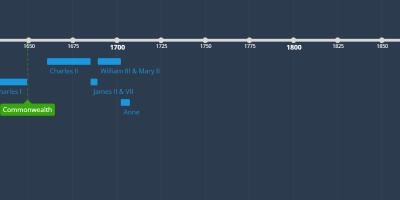1 apr 1559 anni - Elizabethan Settlement
Descrizione:
The Elizabethan Religious Settlement is the name given to the religious and political arrangements made for England during the reign of Elizabeth I (1558–1603) that brought the English Reformation to a conclusion. The Settlement shaped the theology and liturgy of the Church of England and was important to the development of Anglicanism as a distinct Christian tradition.When Elizabeth inherited the throne, England was bitterly divided between Catholics and Protestants as a result of various religious changes initiated by Henry VIII, Edward VI and Mary I. Henry VIII had broken from the Roman Catholic Church and the authority of the pope, becoming Supreme Head of the Church of England. During Edward's reign, the Church of England adopted a Reformed theology and liturgy. In Mary's reign, these religious policies were reversed, England was re-united with the Catholic Church and Protestantism was suppressed.
The Elizabethan Settlement, sometimes called the Revolution of 1559,[1] was an attempt to end this religious turmoil. The Act of Supremacy of 1558 re-established the Church of England's independence from Rome, and Parliament conferred on Elizabeth the title of Supreme Governor of the Church of England. The Act of Uniformity of 1559 re-introduced the Book of Common Prayer from Edward's reign, which contained the liturgical services of the church. Some modifications were made to appeal to Catholics and Lutherans, including giving individuals greater latitude concerning belief in the real presence of Christ in the Eucharist and permission to use traditional priestly vestments. In 1571, the Thirty-Nine Articles were adopted as a confessional statement for the church, and a Book of Homilies was issued outlining the church's reformed theology in greater detail. Throughout the reigns of Elizabeth and James I, Calvinism was the predominant theology within the Church of England.
The Settlement failed to end religious disputes. While most of the population gradually conformed to the established church, a minority of recusants remained loyal Roman Catholics. Within the Church of England, Puritans pressed to remove what they considered papist abuses from the church's liturgy and to replace bishops with a presbyterian system of church government. After Elizabeth's death, the Puritans were challenged by a high church, Arminian party that gained power during the reign of Charles I. The English Civil War and overthrow of the monarchy allowed the Puritans to pursue their reform agenda and the dismantling of the Elizabethan Settlement for a period. After the Restoration in 1660, the Settlement was restored, and the Puritans were forced out of the Church of England. Anglicanism became defined by the via media or middle way between the religious extremes of Catholicism and Protestantism; Arminianism and Calvinism; and high church and low church.
Aggiunto al nastro di tempo:
Data:
1 apr 1559 anni
Adesso
~ 466 years ago
